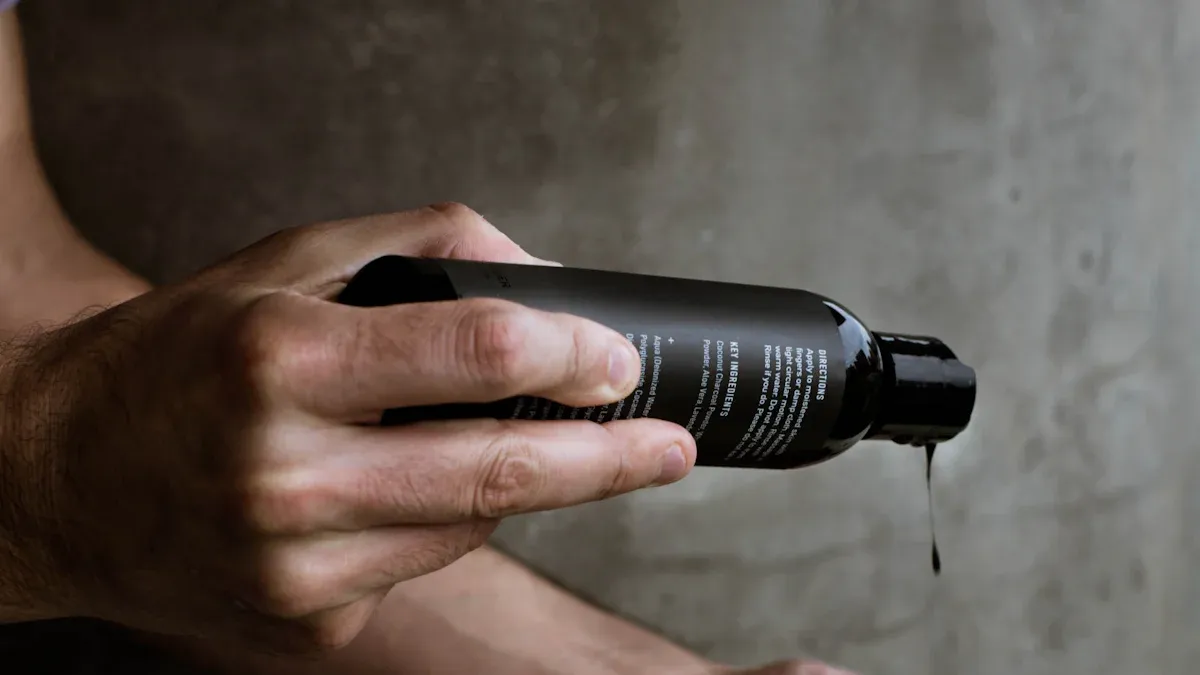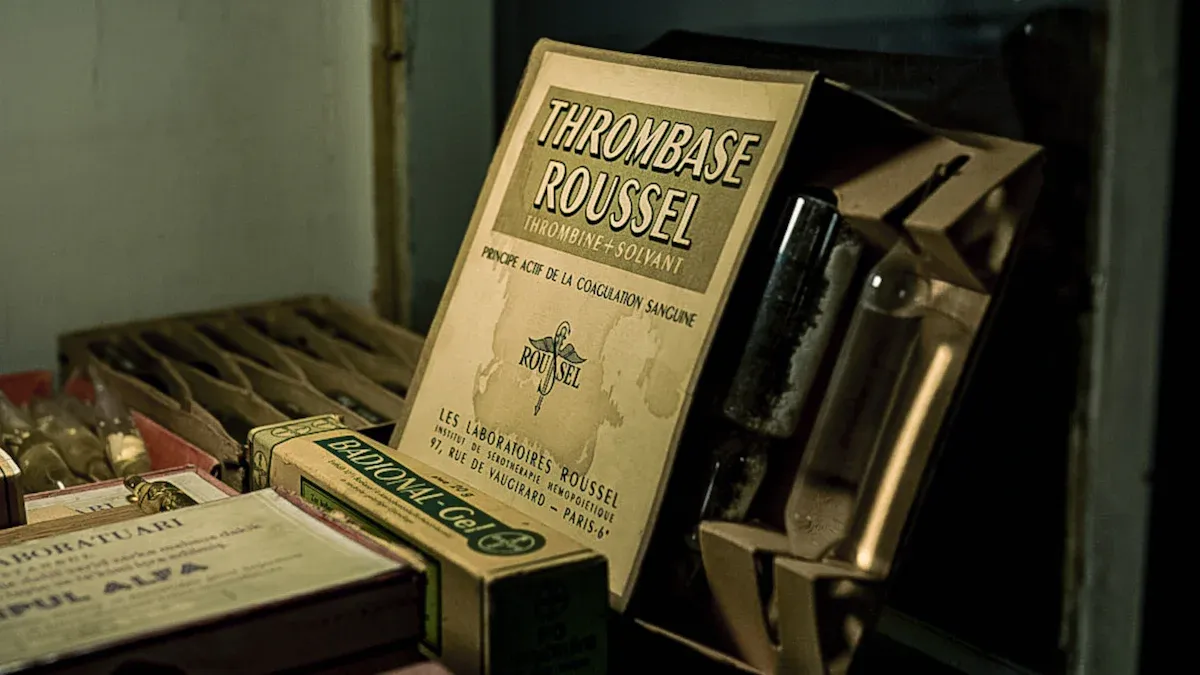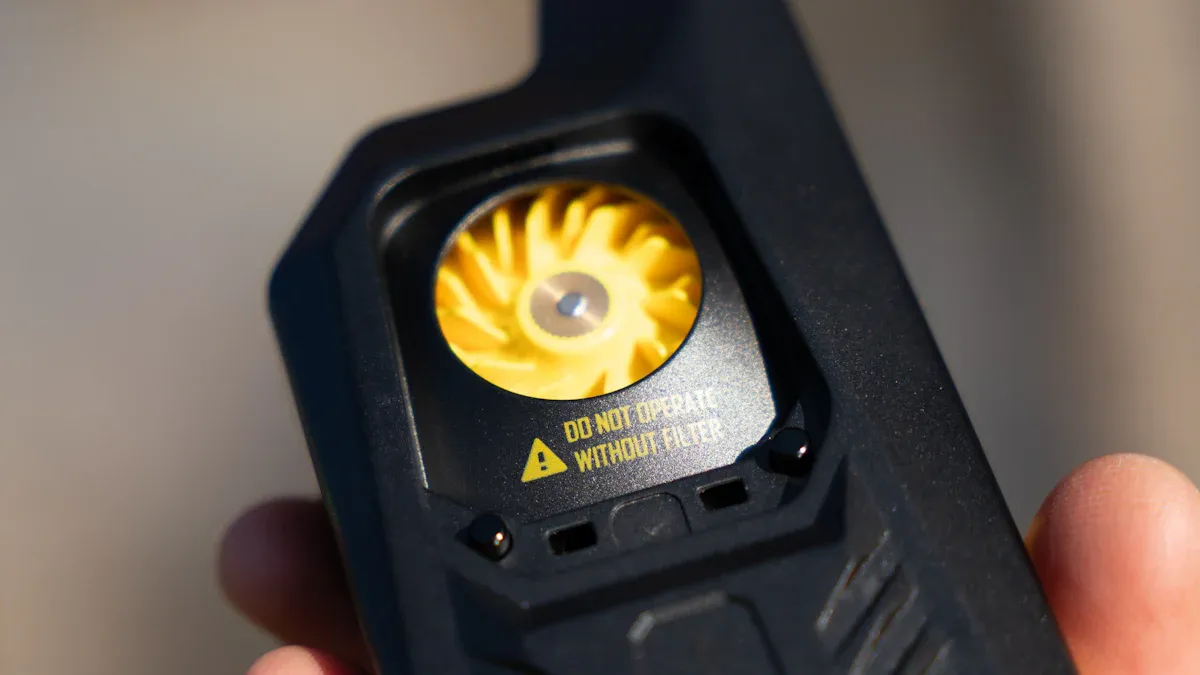Flashlight Care 101: How to Extend the Lifespan of Your Light

Taking proper care of your flashlight ensures it performs reliably when you need it most. Regular maintenance prevents issues like water damage, corrosion, or battery failure. For example, greasing rubber seals with silicone lubricant protects against moisture, while cleaning electrical contacts removes debris. By following these steps, your helius flashlight can remain durable and efficient for years.
Key Takeaways
Keep your flashlight in a cool, dry spot to stop rust or water damage.
Take out the batteries when not using it to prevent leaks and stay safe.
Clean your flashlight every six months to keep it working well and lasting longer.
Proper Storage for Flashlight Care

Store in a cool, dry place
Proper storage is essential to keep your flashlight in top condition. Always store it in a cool, dry place to prevent damage from moisture or extreme temperatures. Humidity can lead to corrosion, especially in the battery compartment, while heat can degrade the flashlight's materials. Avoid direct sunlight, as prolonged exposure can weaken the casing and reduce battery efficiency. If you don’t plan to use your flashlight for a while, remove the batteries to prevent leakage or corrosion. These simple steps ensure your flashlight remains reliable when you need it most.
Avoid exposure to extreme temperatures
Extreme temperatures can significantly impact your flashlight's performance and lifespan. Cold conditions increase the internal resistance of batteries, which lowers their output. On the other hand, warmer temperatures may enhance battery output but shorten their lifespan. Lithium batteries perform better in cold weather compared to alkaline ones, making them a better choice for extreme conditions. To conserve battery life, avoid leaving your flashlight in places like a hot car or freezing garage. Correct storage practices help maintain both the flashlight and its batteries.
Use protective cases for added safety
Using a protective case is a smart way to safeguard your flashlight. Cases shield it from dust, moisture, and accidental impacts. They also help organize your gear, ensuring the flashlight stays in a secure spot. For outdoor enthusiasts, a case with waterproof features adds an extra layer of protection. By investing in a quality case, you can extend the lifespan of your flashlight and reduce the need for frequent maintenance.
Battery Care to Extend the Lifespan
Remove batteries when not in use
Leaving batteries in your flashlight when it’s not in use can lead to serious risks. These include:
Overheating, which may cause burns or damage to the flashlight.
Potential explosions, especially with lithium batteries, if mishandled.
Leakage or corrosion, which can harm the battery compartment.
To avoid these issues, always remove the batteries if you don’t plan to use the flashlight for an extended period. This simple step ensures both safety and longevity for your flashlight.
Use the correct battery type
Choosing the right type of batteries is crucial for flashlight performance. LiFePO4 batteries are an excellent choice due to their high energy output, long life, and stability. They work well in various temperatures, making them reliable for outdoor adventures. Alkaline batteries are affordable but not rechargeable, while NiMH batteries are eco-friendly but have lower energy density. Lithium batteries perform well in cold weather but lack rechargeability. Always check your flashlight’s manual to ensure compatibility and avoid using non-recommended batteries, which can lead to accidents or reduced efficiency.
Clean corrosion from battery contacts
Corrosion on battery contacts can disrupt the flow of electricity and reduce your flashlight’s performance. To clean it effectively:
Mix baking soda and water into a paste, then scrub the contacts with an old toothbrush.
Use vinegar or lemon juice on a cotton swab to dissolve alkaline battery corrosion.
For stubborn buildup, gently sand the contacts with sandpaper or an emery board.
Regular cleaning keeps your flashlight functioning at its best and prevents long-term damage.
Recharge or replace batteries as needed
Proper battery maintenance is essential for optimal flashlight performance. Recharge lithium-ion batteries every 2-3 months if you use the flashlight frequently. For rarely used flashlights, recharge every four months. Avoid overcharging, as it can reduce battery capacity. Follow the manufacturer’s guidelines for charging times and voltage levels. If you’re storing lithium-ion batteries, keep them at a partial charge and avoid extreme temperatures. Replace batteries when you notice a decline in performance to ensure your flashlight remains reliable.
Cleaning and Maintenance for Extending Performance

Wipe down the exterior regularly
Routine maintenance of your flashlight’s exterior ensures optimal performance and longevity. Start by removing the batteries to prevent accidental activation during cleaning. Use a soft, lint-free cloth to wipe away dirt, dust, and debris. Pay close attention to grooves and crevices where grime tends to accumulate. If needed, dampen the cloth slightly with water or a mild cleaning solution, but avoid abrasive materials or harsh chemicals. For adjustable flashlights, clean the threads carefully and apply a silicone-based lubricant to keep them functioning smoothly. Always allow the flashlight to air dry completely before reassembling it.
Tip: Regularly wiping down the exterior not only keeps your flashlight looking new but also prevents dirt from interfering with its performance.
Clean the lens for optimal light output
A dirty lens can reduce your flashlight’s brightness and hinder its performance. Use a microfiber cloth to gently clean the lens, removing dust, fingerprints, or smudges. Avoid using paper towels or rough materials that could scratch the surface. For stubborn spots, lightly dampen the cloth with water or a lens-safe cleaning solution. Keeping the lens clean ensures optimal performance and extends the lifespan of your flashlight.
Lubricate O-rings to maintain water resistance
O-rings play a crucial role in keeping your flashlight water-resistant. Over time, they can dry out or crack, compromising the flashlight’s performance. Apply a small amount of synthetic grease, such as SuperLube, to the O-rings during routine maintenance. Sewing machine oil can also work if applied lightly. This lubrication keeps the O-rings flexible and ensures your flashlight remains protected against moisture.
Inspect and clean the battery compartment
The battery compartment is vital for your flashlight’s performance. Regularly inspect it for signs of corrosion or debris. If you notice corrosion, create a cleaning solution using equal parts vinegar or lemon juice and water. Use a cotton swab dipped in the solution to gently scrub the affected areas. For stubborn buildup, a soft brush can help. After cleaning, wipe the compartment dry with a clean cloth before reinserting the batteries. This practice prevents damage and ensures your flashlight operates efficiently.
Note: A clean battery compartment reduces the risk of electrical issues and keeps your flashlight ready for use.
Preventing Physical Damage to Your Flashlight
Avoid dropping or throwing the flashlight
Dropping or throwing your flashlight can cause serious damage. The internal components, such as the bulb or circuit board, are sensitive to impact. Even a small drop can misalign parts, reducing performance or causing the flashlight to stop working entirely. To prevent this, always handle your flashlight with care. Place it on stable surfaces when not in use. If you’re outdoors, avoid tossing it into your bag without securing it. Treating your flashlight gently ensures it stays reliable for years.
Use a wrist strap or lanyard
A wrist strap or lanyard is a simple yet effective tool to protect your flashlight. It keeps the flashlight securely attached to your hand, reducing the risk of accidental drops. This is especially useful during activities like hiking, camping, or working in tight spaces. Many flashlights come with built-in attachment points for straps. If yours doesn’t, you can purchase a universal strap that fits most models. Using a strap not only prevents damage but also makes your flashlight easier to carry.
Tip: Always check the strap for wear and tear. Replace it if it shows signs of fraying to avoid unexpected breaks.
Protect from heavy impacts or crushing forces
Heavy impacts or crushing forces can permanently damage your flashlight. Avoid placing it under heavy objects or in areas where it might get stepped on. When storing it in a bag, keep it in a protective case to shield it from pressure. If you’re working in environments with heavy machinery, keep the flashlight in a secure pocket or on a belt clip. These precautions help maintain the flashlight’s structure and functionality.
Regular Inspections for Long-Lasting Flashlight Care
Check for loose or damaged parts
Inspecting your flashlight for loose or damaged parts is essential for maintaining its performance. Start by checking the battery compartment. Ensure the contacts are clean and free of corrosion. Debris or buildup in this area can disrupt the flow of electricity. Examine the lens and bulb for cracks or scratches that might reduce light output. Tighten any loose screws or components to prevent further damage. Regular inspections every six months can help you catch issues early and keep your flashlight in excellent condition.
Tip: Remove the batteries before inspecting to avoid accidental activation.
Test the flashlight periodically
Testing your flashlight ensures it works when you need it most. If you use it daily, test it at least once a month. For less frequent use, a bi-yearly inspection is sufficient. Turn it on and check the brightness and beam consistency. If the light flickers or dims, it may indicate battery issues or internal damage. Testing regularly helps you identify problems early and ensures your flashlight remains reliable.
Inspect seals and switches for wear
Seals and switches are critical for your flashlight’s functionality. Examine the O-rings for cracks or dryness, as these can compromise water resistance. Apply a small amount of lubricant to keep them flexible. Test the switches to ensure they click smoothly and respond without delay. Worn-out seals or faulty switches can lead to water damage or operational failure. Regular maintenance of these components extends the lifespan of your flashlight.
Taking care of your flashlight ensures it remains reliable and efficient for years. Follow these essential maintenance tips to keep it in top condition:
Clean your flashlight every six months to reduce buildup and debris.
Remove batteries when not in use to prevent corrosion.
Store your flashlight in a cool, dry place to prevent water damage and maintain performance.
By implementing proper care techniques, you can extend the lifespan of your flashlight. This reduces the need for frequent replacements and saves money. A well-maintained flashlight also ensures it is always ready when you need it most. Rechargeable batteries and proper charging techniques further enhance longevity while reducing waste. Start maintaining your flashlight today to enjoy its durability and dependability for years to come.
FAQ
How often should you clean your flashlight?
You should clean your flashlight every six months. This prevents dirt buildup and ensures optimal performance. Regular cleaning also helps maintain its durability and reliability.
Tip: Set a reminder on your calendar to stay consistent with maintenance.
Can you use any type of battery in your flashlight?
No, always use the battery type recommended by the manufacturer. Using the wrong type can damage your flashlight or reduce its efficiency.
What should you do if your flashlight gets wet?
Dry it immediately with a soft cloth. Remove the batteries and inspect the interior for moisture. Let it air dry completely before reassembling.
Note: Lubricate the O-rings after drying to restore water resistance.
See Also
Maximize Your Flashlight's Lifespan for Extended Usage
Key Strategies for Proper Flashlight Upkeep
Boost Your Flashlight's Battery Life with These Tips
Comprehensive Handbook for Maintaining and Cleaning Flashlights
